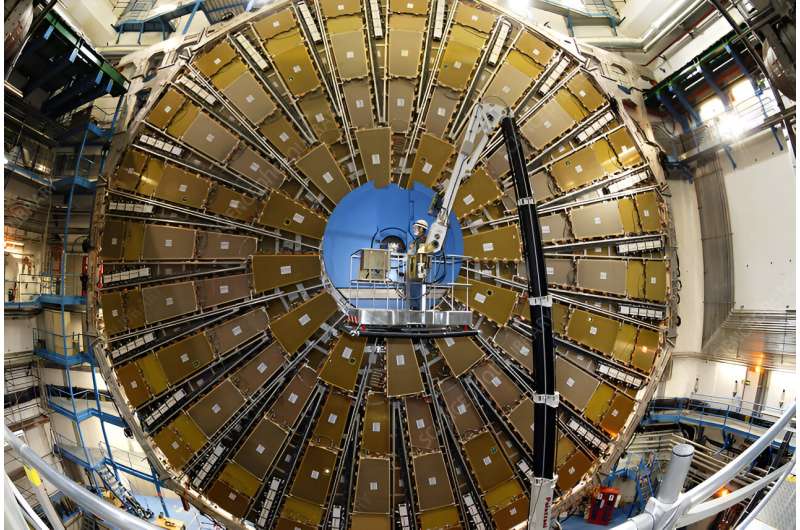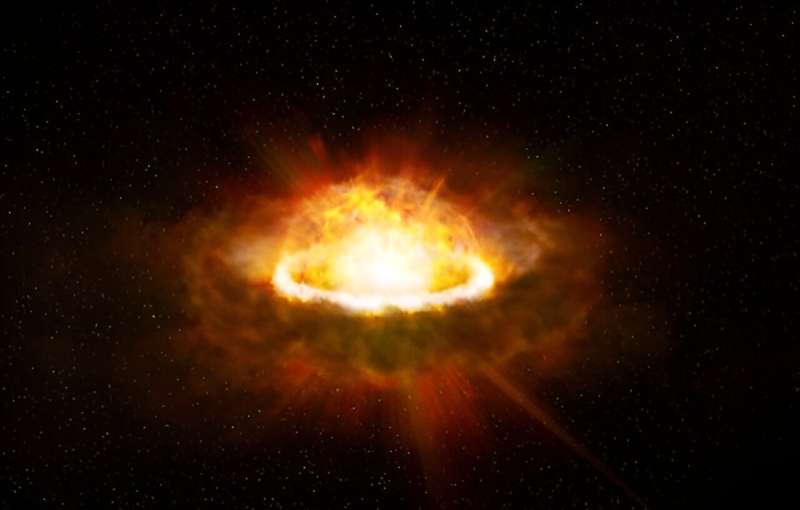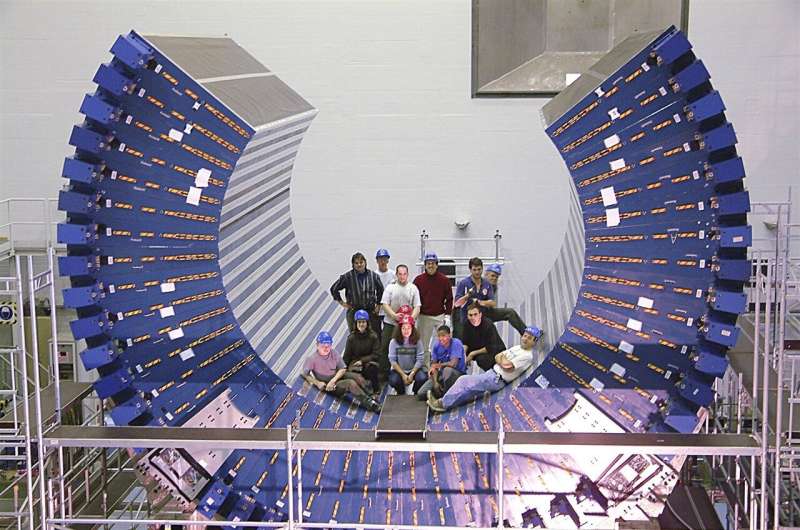March 5, 2024 feature
This article has been reviewed according to Science X's editorial process and policies. Editors have highlighted the following attributes while ensuring the content's credibility:
fact-checked
peer-reviewed publication
trusted source
proofread
Study shows that the ATLAS detector can measure the flux of high-energy supernova neutrinos

High-energy neutrinos are extremely rare particles that have so far proved very difficult to detect. Fluxes of these rare particles were first detected by the IceCube Collaboration back in 2013.
Recent papers featured in Physical Review D and The Astrophysical Journal Letters found that nearby supernovae, especially Galactic ones, would be promising sources of high-energy neutrinos. This has inspired new studies exploring the possibility of detecting neutrinos originating from these sources using large particle collider detectors, such as the ATLAS detector at CERN.
Researchers at Harvard University, University of Nevada and Pennsylvania State University recently demonstrated that the ATLAS detector can measure the flux of high-energy supernova neutrinos. Their new paper, published in Physical Review Letters, could inspire future efforts aimed at detecting fluxes of high-energy neutrinos.
"Carlos A. Argüelles, Ali Kheirandish and I met each other at the KITP workshop in Santa Barbara, and figured out that high-energy supernova neutrinos are promising targets for not only large neutrino detectors but also particle physics detectors," Kohta Murase, co-author of the paper, told Phys.org. "Collider detectors such as ATLAS of LHC can be much better than neutrino detectors such as IceCube to study the properties of neutrinos (flavors, antineutrinos, new physics etc.)."

The neutrino-nucleon cross sections, the mass of ATLAS and the expected flux of neutrinos from a given supernova as a function of time, were already known. By considering an integral part of these known quantities together, Murase and his colleagues were able to estimate the number of neutrinos that would directly interact in the ATLAS detector.
"We also accounted for neutrinos that interact in the Earth outside the detector, and produce a muon that could be detected within the detector," Alex Y. Wen, co-author of the paper, said. "We used a software called LeptonInjector, which modeled such events accounting for the neutrino flux, detector geometry, and so on. These calculations gave us the estimated number of neutrino signal events for a given supernova.
"From there, based on what we knew about the hardware capabilities of ATLAS, we showed that it could tell these signals apart from the background and recover important information about the neutrino such as its charge and flavor."
Based on their calculations, Murase, Wen and their colleagues concluded that even with limited statistics, the ATLAS detector at CERN's Large Hadron Collider (LHC) should be able to characterize the flavor of neutrinos. In addition, the detector should be able to discriminate between neutrinos and antineutrinos.

"Many previous studies on high-energy astrophysical neutrinos relied on large volume detectors using water or ice (such as Super-Kamiokande and IceCube)," Murase said. "This work demonstrates that large particle detectors in collider experiments, such as ATLAS and CMS, which have much better energy and angular resolution and particle identification capabilities, serve as unique astrophysical neutrino detectors. This is powerful and complementary to the conventional approach."
This recent paper highlights the potential of the ATLAS and CMS collider detectors for detecting high-energy neutrinos originating from galactic supernovae in the future. In the future, it could thus inspire the ATLAS and CMS collaboration to initiate searches for galactic supernovae high-energy neutrinos, potentially helping to gather new insight about these rare particles only with a limited number of neutrinos.
"Our work adds ATLAS and similar densely instrumented experiments to a network of experiments monitoring the sky in search of the next galactic Supernovae," Carlos Argüelles-Delgado, another researcher involved in the study, said. "It's very exciting for me to think about scientists across a wide range of experimental high-energy physics from MeV to TeV energies looking into this."
Murase, Wen and their collaborators plan to continue exploring this newly identified research avenue. In their next works, for instance, they would like to focus on how other collider detectors could contribute to the observation of high-energy neutrinos.
"In our future studies, it may be interesting to consider prospects for other collider detectors and implications for physics beyond the Standard Model," Murase added.
More information: Alex Y. Wen et al, Detecting High-Energy Neutrinos from Galactic Supernovae with ATLAS, Physical Review Letters (2024). DOI: 10.1103/PhysRevLett.132.061001
Journal information: Physical Review D , Astrophysical Journal Letters , Physical Review Letters
© 2024 Science X Network





















